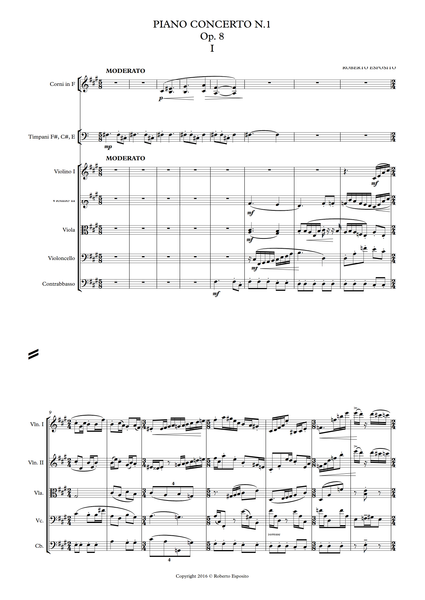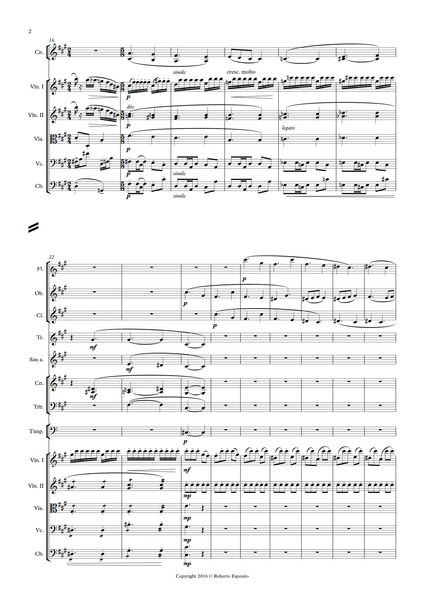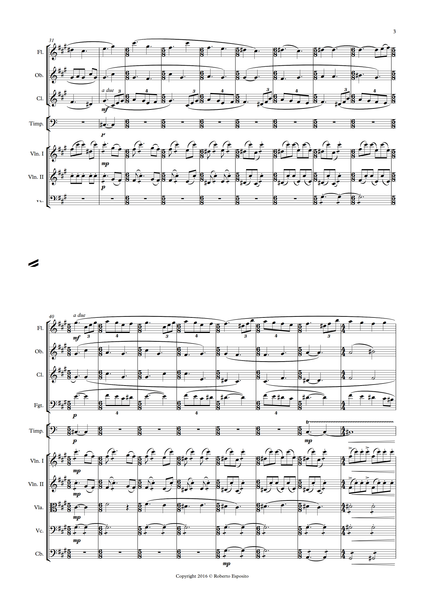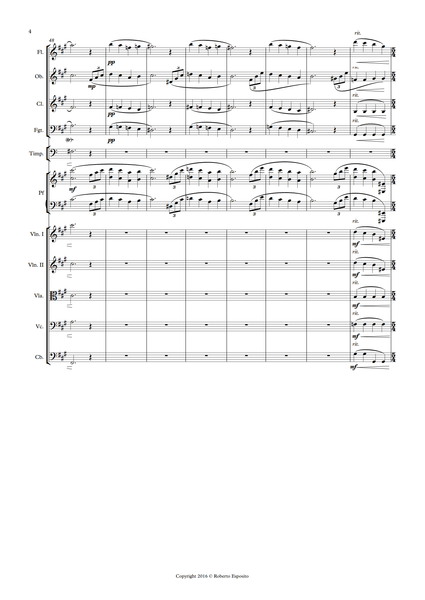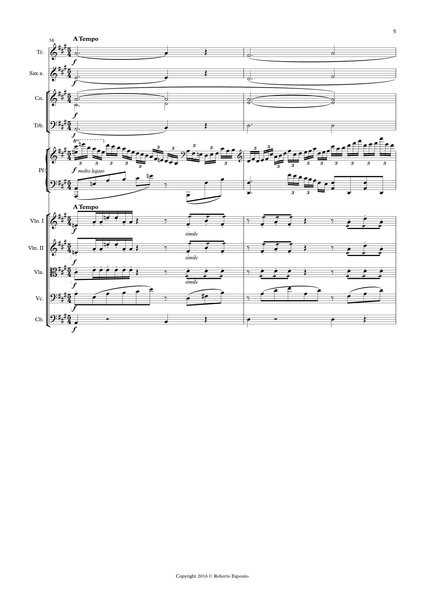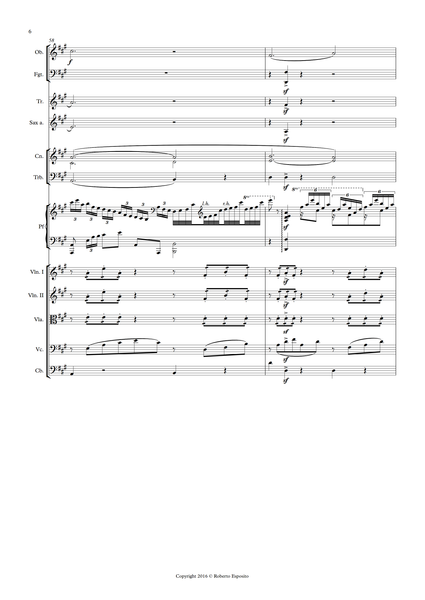Roberto Esposito: Piano Concerto No. 1, Op. 8, "Fantastico" (GPC036)
Sheet music edition. Choose your format from the selection above.
119 pages
for piano and orchestra
Instrumentation: piano solo; 1+1.2.2.2 - 2.2.1.0 - alto sax - timp - perc (bass drum, snare drum, cymbals) - hp - strings
27 mins
The Piano Concerto, Op. 8, No. 1 ‘Fantastico’ stem from Roberto's desire as a pianist and a composer to engage with the major musical structures of nineteenth- and twentieth-century Classical and Romantic music. While drawing inspiration from the great composers of the past, he had no qualms about injecting Classical form with the musical idioms closest to my heart—those of jazz and the folk music of the Mediterranean.
The opening movements of the Concerto hark back to earlier times (memories of Beethoven, Ravel, Rachmaninov, Scriabin), observing pretty much to the letter the canons of sonata form—exposition, development, recapitulation—but with the sharpness of the language of improvisation adding new light and freshness to these traditional forms (especially in the development section). The two movements are primarily distinguished by the use of two very different key signatures, namely F sharp minor and B flat minor.
Jazz influences come to the fore in the central movements. The Concerto’s Adagio ironico (in A–B–A form) refers to the big-band tradition of Duke Ellington. Its counterpart in the Sonata aims to surprise the listener—it’s a slow ballad in perfect mainstream, non-blues style, typical of jazz song and American pop, although with a generous space set aside at its heart for the piano to indulge in some pure improvisation.
The Concerto’s finale (Presto) uses melodic fragments typical of the pizzica salentina (a traditional folk dance from Puglia), built on a characteristic triplet-based rhythm (in 4/4 and 12/8). It sets out two contrasting themes (one rhythmical, the other melodic) that unfold along a single harmonic line. The Bàrbaro finale of the Sonata, meanwhile, recalls the rhythmic vitality of Bartók (with its 6/4 ostinato), and the audacious harmonies of Nikolay Kapustin, ultimately exploding in a triumphal burst.







